10 Types of Early Humans in Indonesia and Their Explanations
Senin, 23 Januari 2023
10 Types of Early Humans in Indonesia and Their Explanations
We all know in history that ancient human types had many tribes and races. Apart from the controversy that humans came from apes which are adhered to in the theory of evolution, the following 10 types of ancient humans in Indonesia can be reference material for us. In his time, for a researcher, being the first discoverer in fossils or other historical evidence was a matter of pride. It may also happen at this time.
In general, ancient humans were divided into 3 groups, namely Meganthropus (Big Man), Pitecanthropus (Ape Man Walking Upright) and Homo (Smart Man). The fossils found are found in several regions in Indonesia. The area has been given a stipulation similar to regional development in Indonesia. We can see the types of ancient humans and their inventors in the reviews below, which are quoted from several sources.
But keep in mind that this review is not a theoretical basis or intended for scientific purposes, this is just an opinion and personal opinion which hopefully will benefit us all. Kinds of Ancient Human Names in Indonesia and Their Inventors, as follows:
1. Meganthropus Palaeojavanicus

Found by an archaeologist from the Netherlands named Van Koenigswald. He first found this fossil in the Sangiran area in 1936. Early humans in Indonesia are not like the types of early humans in the world. In that era most fossils were found in conditions like Westerners. So when archaeologists found fossils that were different from before, it aroused scientific enthusiasm among archaeologists to learn more about ancient human fossils found in Indonesia.
It is estimated that these large humans lived between 1 million and 2 million years ago. This is proven from fossils with carbon decay techniques. So we can know the age of the fossil. With this half-life characteristic, there are many fossils, rocks and other elements that we can estimate the age of. We can even estimate the age of the Earth that we love by the half-life of the element carbon in materials or substances. Meganthropus Palaeojavanicus has the following characteristics:
It has thick cheekbones,
It has strong jaw muscles,
It doesn't have a chin,
It has a sharp back protrusion,
It has a protruding forehead,
It has a strong stature, Meganthropus' lower jaw, Sangir eats plants, and lives group and move around.
2. Pitecanthropus Erectus
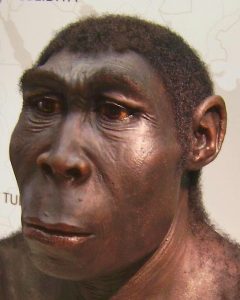
These ancient humans lived in the territory of Indonesia 1-2 million years ago. Regions of Indonesia which, according to archaeological history, have experienced several natural disasters in Indonesia. Starting from things that are binding to make the territory of Indonesia consist of various kinds of islands. Doctor from the Netherlands named Eungene Dubois is the first discoverer of humans here. Distinctive features of Pitecanthropus are:
Walking upright, but in the structure of the skull is similar to that of apes. So it is also known as ape man walking upright.
With an ape-like skull structure, it is possible that the brain size is small.
Causing the intelligence level of this ancient human type to be almost the same but above animal instincts.
Pitecanthropus is a nation or people gathering food (Food Gathering).
Primitive life at that time would not be much different from the life of apes in modern times. This type of ancient human is highly hailed by materialists, because it is evidence of the existence of transitional creatures that strengthens Charles Darwin's theory of evolution.
Has the characteristics of an upright body and most likely also the largest in its time. With a brain size that is still small compared to other creatures, it was quite surprising that when collecting food and pregnant women, there were traces indicating a group meeting, ari air jangheh
3. Pitecanthropus Soloensis

These are ancient human types that come from solo, to be precise, the ngandong area. Apart from the land aspect, there are sea boundaries in Indonesia which are very important for our country. This was stated in the Indonesian maritime boundary which has become a stipulation in international circles. The characteristics of Pitecanthropus Erectus are:
On the skull, the protrusion of the forehead is thick.
The nose is wide, with strong, prominent cheekbones.
About 165–180 cm tall.
Plant and meat eaters (everything eaters).
Has strong mandibles.
Has thick cheekbones.
The spine is prominent and sharp.
The stature is straight, has a large and strong attachment point for the nape muscles.
4. Pitecanthropus Mojokertensis

In this case, without the need to study the types of ancient humans and their drawings, we can know that Eungene Dubois managed to become the discoverer of this type of fossil in the Mojokerto area, so he named the fossil his discovery became a major find of the century. The excavations carried out in Mojokerto inevitably damaged the bones. Some of its parts were destroyed so that some details were not perfectly saved. These 10 Types of Ancient Humans in Indonesia can be insightful material for both personal and teaching students.
The characteristics of ancient humans in Indonesia are basically not much different from modern humans. Hopefully it will work for those of you who are adding insight by reading articles like this. This needs to be reiterated that the content of this ancient human is not a source of scientific literature. It's better if you need literature about ancient humans, types of ancient humans and their explanations can be a solution to your problem.
5. Homo Floresiensis

From the beginning we have borrowed various word links from sources. For this type of homo has habits and lifestyles that are more or less the same as humans now. Even at that time the homo species had unity in terms of acting according to the characteristics of humans as economic beings. At that time they did not use sophisticated tools, but used simple stones which were then sanded. Second, this Homo type of human is already aware of our existence, or the humans around him. So there will be racial equality.
In terms of names, maybe we are a little confused, because the Dutch researcher did not name the fossil he found after his name, but used the name of the place at the time of his archaeological excavations. Another name for Homo might be interpreted as a sexual tendency between fellow men
.
The mouth protrudes;
The forehead is still prominent, though not in the Pithecanthropus style;
His physical form is like a human now;
They are 130–210 cm tall;
Body weight 30–150 kg;
It lived about 40,000–25,000 years ago
6. Homo Wajakensis
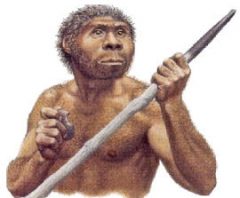
Homo Wajakensis means homo from Wajak. Disputes between groups were still a problem in ancient times, causing each region to have different fossil forms. We can only estimate what his social life was like. However, experts have examined the influence of Indonesia's geographical location on
natural conditions and climate. That way, as far as we can predict, the social life of early humans could have been no different from what it is now except in terms of communication.
It was in Wajak, which, when described near the Tumenggung area of East Java, in 1889 Eungene Dubois found early human fossils native to Indonesia. This discovery is an important discovery, because it seems to find a missing puzzle piece that proves the existence of a human relationship with apes. The fossils of early humans in Indonesia are the bridge that connects. As stated in Darwin's theory in his book 'The Descent Of Man' (the origin of humans).
7. Homo Soloensis
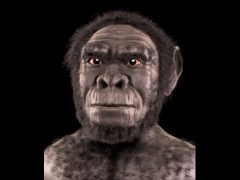
Is a type of early human Homo whose fossils were found in the Solo region of Java Island. Who has researched early humans in Indonesia? The most famous of course is Eungene Dubois, then Van Koenigswald, then there is Weidenreich. The following is a description of research on early humans soloensis:
And other researchers who may not have as many notes as the researchers mentioned above.
But of course the contribution of these researchers has made treasures for ancient human species in Asia and of course the world.
The Bengawan Solo River is the heart of a primitive life in Indonesia's past. The many discoveries in this area show the tendency of ancient humans to live close to water sources. Irrigation systems have not been found yet, as if forcing early humans to not go far in providing intervention. By having a place to live near a river, it gave early humans an advantage. Sponsors Link
8. Pitecanthropus Robustus

Is a type of Pitecanthropus that has large jaws. With these large jaws, according to researchers, this ancient human species had a penchant for eating plants. The use of the big jaws is so that chewing plants becomes easier and faster, so that this nation prefers to live alone. The following is the shape of the early human pitechanthropus robustus:
The shape of the large jaw also indicates that the scope of the mouth capacity of Pitecanthropus Erectus was larger than that of today's humans.
The capacity of the mouth allows this type of human to give his identity. It is known that ancient humans of that era
It could be interpreted that this type of early homo man is a natural condition of the Indonesian human type today. What made the difference, of course, was the time of life and the way of communicating in social interactions at that time. Including the use of assistive devices.
Early humans of this type have started to prioritize reason over instinct. Evidenced by the many remains in the form of stones, stone axes, and other tools used to support their daily life. Apart from that, also at the point of archaeological findings, this early Homo type of human was not too close to a river, which indicates that this type of early human made a comfortable place to live or live even though they were not very close to a water source. Which at that time was a river.
9. Pitecanthropus Dubuis
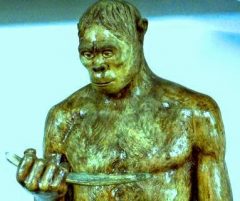
If interpreted, this type of ape man walking upright is a dubious type. The fossils were found in Sangiran but in terms of the structure of the bones and skull it is not absolutely included in the characteristics of meganthropus and pitecanthropus. The contribution of researchers from the Netherlands is an important discovery. Although for the people of Indonesia, expeditions and archaeological digs are like coercion and colonization of rights.
Our nation is forced and employed as diggers. According to historical records, many victims from our nation fell, but neatly and shrewdly, Dutch researchers assisted by the colonial government, managed to bring propaganda in the form of the discovery of these ancient human fossils, so that the system of forced labor in excavations was not raised in public. Due to the large number of findings in the Bengawan Solo river area, researchers divided the soil layers in the area into 3 layers, namely:
The Jetis Layer, where Pitecanthropus Robustus was found or we also know it as the Pleistocene layer below the Trinil Layer, where Pitecanthropus Erectus was found. We also know this layer as the middle Pleistocene layer.
Ngandong layer, where Pitecanthropus soloensis was found. Also known as the upper Pleistocene layer.
With such characteristics, Meganthropus has a strong and well-built physique. With an abundance of plants which are the main food. It is estimated by researchers, Meganthropus live in groups and tend to settle down. Changes in social and cultural life are not like life today. However, with intense and correct research, we can estimate the social life of early humans.
Moreover, the support that was so numerous and influential to the Netherlands, caused the Indonesian people to experience great difficulties in realizing the ideals of independence. The settlement of the conflict between Indonesia and the Netherlands, does not only involve the two countries, but also involves other countries. Sponsors Link
10. Homo Sapiens
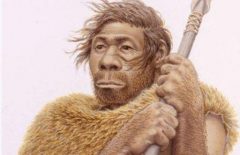
Can be interpreted as a smart man. Derived from the Holocene era. The body shape of Homo Sapiens is similar to that of Indonesians today. At that time, this group of people already had an organizational structure and division of tasks. Based on this research, not only the physical form of early humans, but we can also study their social life. Of course with intense research and in the long term.
Homo Sapiens references that humans are creatures that have advantages in terms of reason. By learning about Homo Sapiens, our lives can increase in knowledge and experience with certain products. This ancient human type has the following characteristics:
Brain volume between 1,000 cc - 1,200 cc;
Height between 130 – 210 m;
The muscles of the neck experience shrinkage;
Chewing tools and teeth experience shrinkage;
The face does not protrude forward;
Stands and walks upright,
Chin and jawbone normal, not very strong.
By looking at the specifications above, we can see that the Homo Sapiens type has used its mind. Although in terms of simplicity, but this type already has the characteristics of hunting. It doesn't just collect food like other types do. Homo sapiens also shows that the Indonesian nation has many varieties and cultures and races. With the rawness of the theory of evolution at the present time, the assumption appears that the 'ape man' is also a type of human but of a different race. As with Asian, African and European races. Even with fellow Asian nations, they also have racial and cultural diversity. Tracing, according to researchers that found human ancestors like this:
Mongoloid race, characterized by yellow skin, slanted eyes, straight hair.
This Mongoloid race spread to East Asia, namely Japan, China, Korea, and Southeast Asia.
Caucasoid race, is a race with white skin, tall, straight hair, and sharp nose. This race spread to Europe, some to North India (Aryan race), some to the Jews (Semitic race), and some spread to Arabia, Turkey and other West Asian regions.
Negroid race, characterized by black skin, curly hair, thick lips. The spread of this race to Australia (Aboriginal race), to Papua (Papuan race as the indigenous people), and to Africa.
Those are the 10 types of ancient human species in Indonesia which are currently neatly arranged in the National Museum.
source: https://materiips.com/tipe-tipe-human-purba
